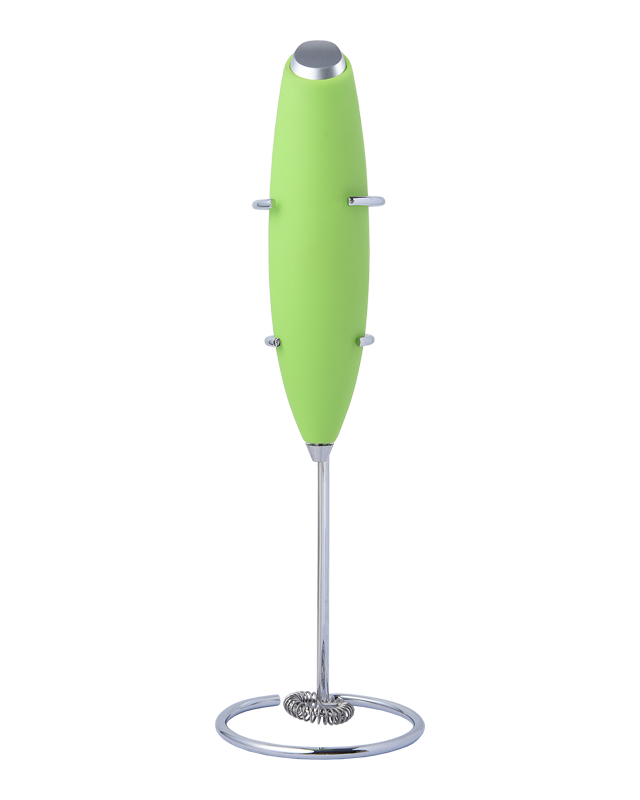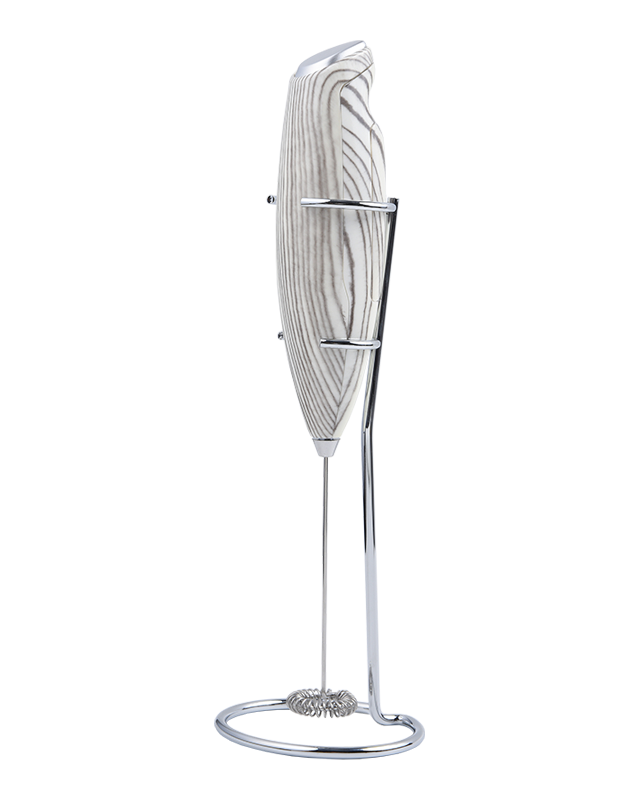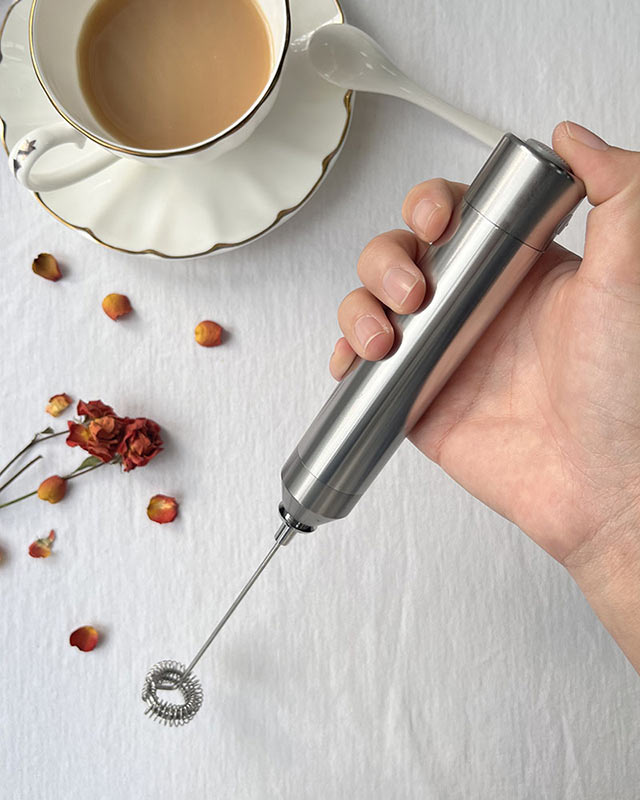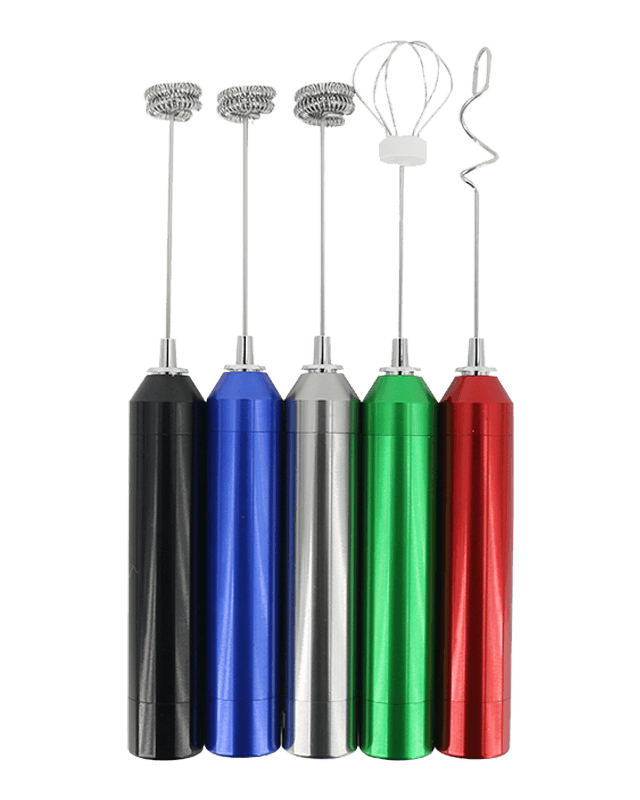The material used in the construction of the frothing whisk is a significant factor in determining the quality of the foam produced by a Stick Milk Frother. High-quality materials like stainless steel are commonly used for the whisk because they are durable, corrosion-resistant, and non-reactive, which is crucial when frothing milk at high temperatures. Stainless steel is also smooth and allows the whisk to glide efficiently through the milk, minimizing friction and creating consistent foam with a uniform texture. The heat tolerance of stainless steel ensures that it can withstand the high temperatures typically required for milk frothing, ensuring the longevity of the whisk. In contrast, whisks made from plastic or low-grade metals may not be as durable, could warp under heat, and may not provide the same level of consistent frothing performance. A high-quality whisk made of stainless steel allows for optimal air incorporation, leading to fine and stable foam, essential for achieving the desired froth texture.
The shape of the frothing whisk plays an important role in the texture of the foam. Whisks come in various designs, from single loops to multi-spirals, and each design produces different foam textures. A multi-spiral whisk creates more turbulence and incorporates more air into the milk, which leads to a lighter, airier foam suitable for cappuccinos or other drinks that require frothy, voluminous milk. Whisks with smaller, tighter loops are designed to produce denser and creamier foam, which is ideal for latte or macchiato styles, where a smooth, velvety foam is preferred over airy froth. The larger surface area of a more intricate whisk allows for better agitation of the milk, breaking it into smaller bubbles, which ultimately results in foam with a smooth texture that holds together for a longer time. On the other hand, a simple whisk with a single loop may not create the desired level of foam consistency or texture and may be better suited for tasks that don’t require heavy frothing, such as mixing or aerating lighter beverages.
The size and length of the whisk are vital in determining how effectively the frother operates, particularly when working with different container sizes. The longer whisk can reach the bottom of taller milk containers, ensuring that milk is uniformly froth throughout the entire volume, especially in larger batches. This is particularly useful for professionals who may need to froth large amounts of milk quickly. In contrast, shorter whisks are typically more effective for smaller containers, allowing for more control in frothing smaller portions of milk without over-frothing or creating an inconsistent texture. The length of the whisk affects the frothing speed. Longer whisk generally has more surface area to interact with the milk, leading to faster aeration, while a shorter whisk may take more time but can offer greater precision in creating a specific texture. The whisk’s size also influences the speed of frothing—larger whisks generate quicker results because of the greater amount of milk being agitated at once, whereas smaller whisks allow for more gradual, precise frothing control.
The speed of the whisk’s rotation is a fundamental design feature that influences the overall frothing process. High-speed rotation whisks the milk faster, incorporating more air and creating a lighter, more airy foam. This is ideal for drinks like cappuccinos, where frothy milk is desired. However, this rapid air incorporation might not always lead to the rich, dense foam needed for some beverages, as it can result in larger, less stable bubbles. Conversely, a slower whisk speed produces denser, creamier foam by incorporating less air at a slower pace, resulting in smaller, more uniform bubbles. A variable speed setting on a Stick Milk Frother allows users to control the froth density and texture based on the drink they are making. Adjusting the speed can enhance the user’s ability to create fine, velvety foam for lattes or cappuccinos, while a faster speed can be used for fluffy, voluminous foam for cappuccinos and other frothy drinks. Optimal frothing is achieved when the whisk speed is paired with the right power to create the best foam texture based on personal preference.



 English
English
 Français
Français
 Español
Español
 Deutsch
Deutsch
 日本語
日本語





























